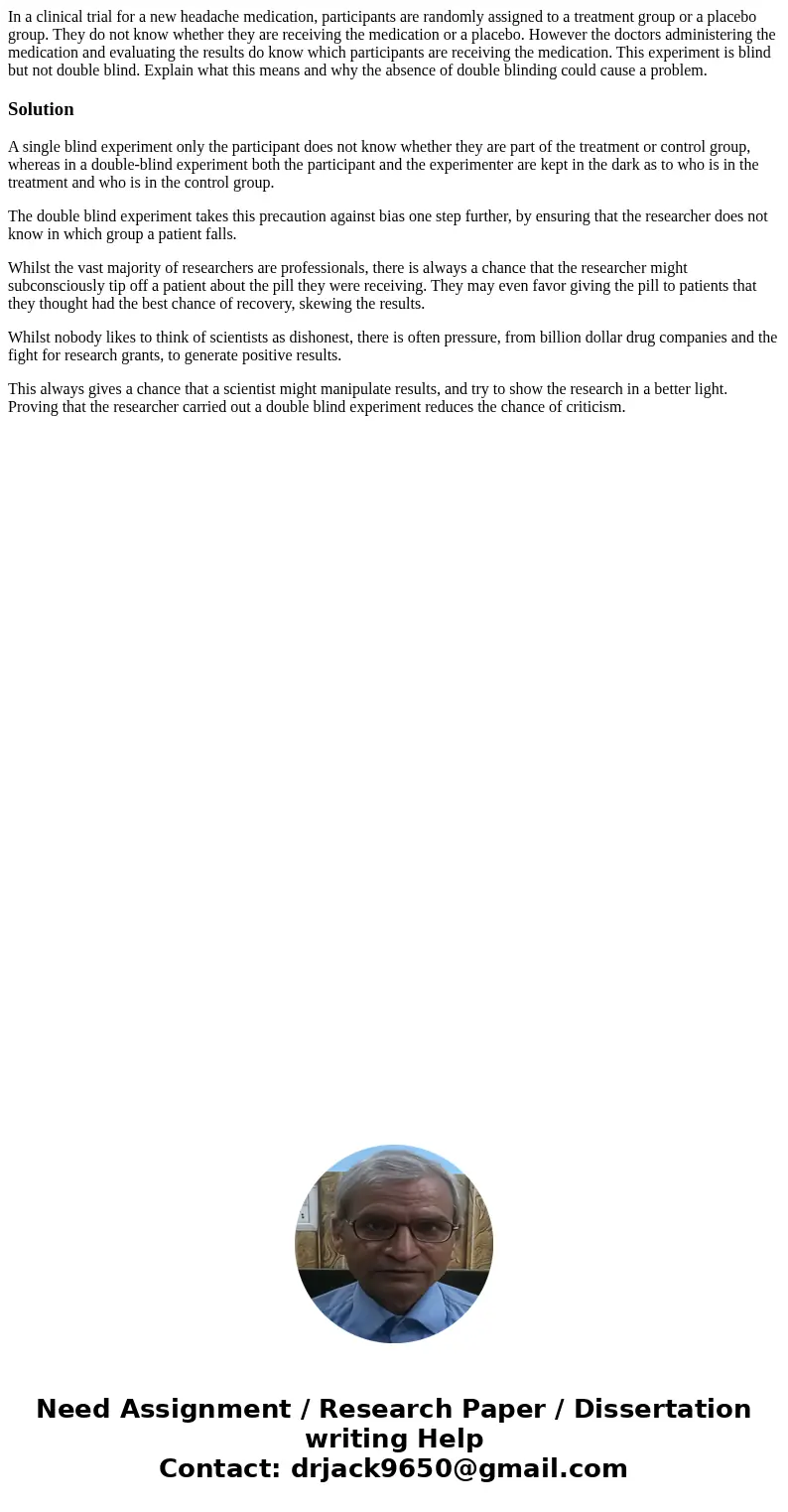In a clinical trial for a new headache medication participan
In a clinical trial for a new headache medication, participants are randomly assigned to a treatment group or a placebo group. They do not know whether they are receiving the medication or a placebo. However the doctors administering the medication and evaluating the results do know which participants are receiving the medication. This experiment is blind but not double blind. Explain what this means and why the absence of double blinding could cause a problem.
Solution
A single blind experiment only the participant does not know whether they are part of the treatment or control group, whereas in a double-blind experiment both the participant and the experimenter are kept in the dark as to who is in the treatment and who is in the control group.
The double blind experiment takes this precaution against bias one step further, by ensuring that the researcher does not know in which group a patient falls.
Whilst the vast majority of researchers are professionals, there is always a chance that the researcher might subconsciously tip off a patient about the pill they were receiving. They may even favor giving the pill to patients that they thought had the best chance of recovery, skewing the results.
Whilst nobody likes to think of scientists as dishonest, there is often pressure, from billion dollar drug companies and the fight for research grants, to generate positive results.
This always gives a chance that a scientist might manipulate results, and try to show the research in a better light. Proving that the researcher carried out a double blind experiment reduces the chance of criticism.

 Homework Sourse
Homework Sourse